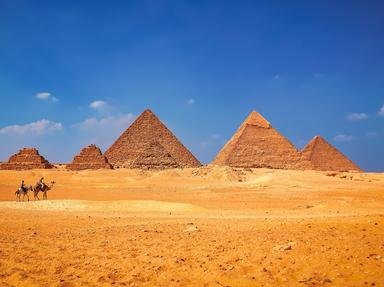Quiz Answer Key and Fun Facts
1. The scientific name for the Egyptian scarab is "Scarabaeus sacer". However, what is its common name?
2. What did the scarab beetle represent to the ancient Egyptians?
3. The ancient Egyptians made scarab beetle amulets from many different materials. What was the name for the glazed ceramic earthenware, usually blue-green in color, that was used?
4. To the ancient Egyptians, what was represented by the ball the scarab pushed?
5. Which ancient Egyptian deity, one with a scarab's head, aided in the daily movement of the sun?
6. Ancient Egyptian scarabs came in three different forms. In which of the following ways was a pectoral scarab typically used?
7. Another form of the ancient Egyptian scarab was called a heart scarab. What was its purpose?
8. The third type of ancient Egyptian scarab was called a commemorative scarab. Which pharaoh, father to the famous Ikhnaton, was known for issuing several types of commemorative scarabs?
9. The ancient Egyptians believed the the scarab was only male in gender and was able to reproduce without a female.
10. The scarab charm was only for the wealthy in ancient Egypt.
Source: Author
ponycargirl
This quiz was reviewed by FunTrivia editor
bloomsby before going online.
Any errors found in FunTrivia content are routinely corrected through our feedback system.

